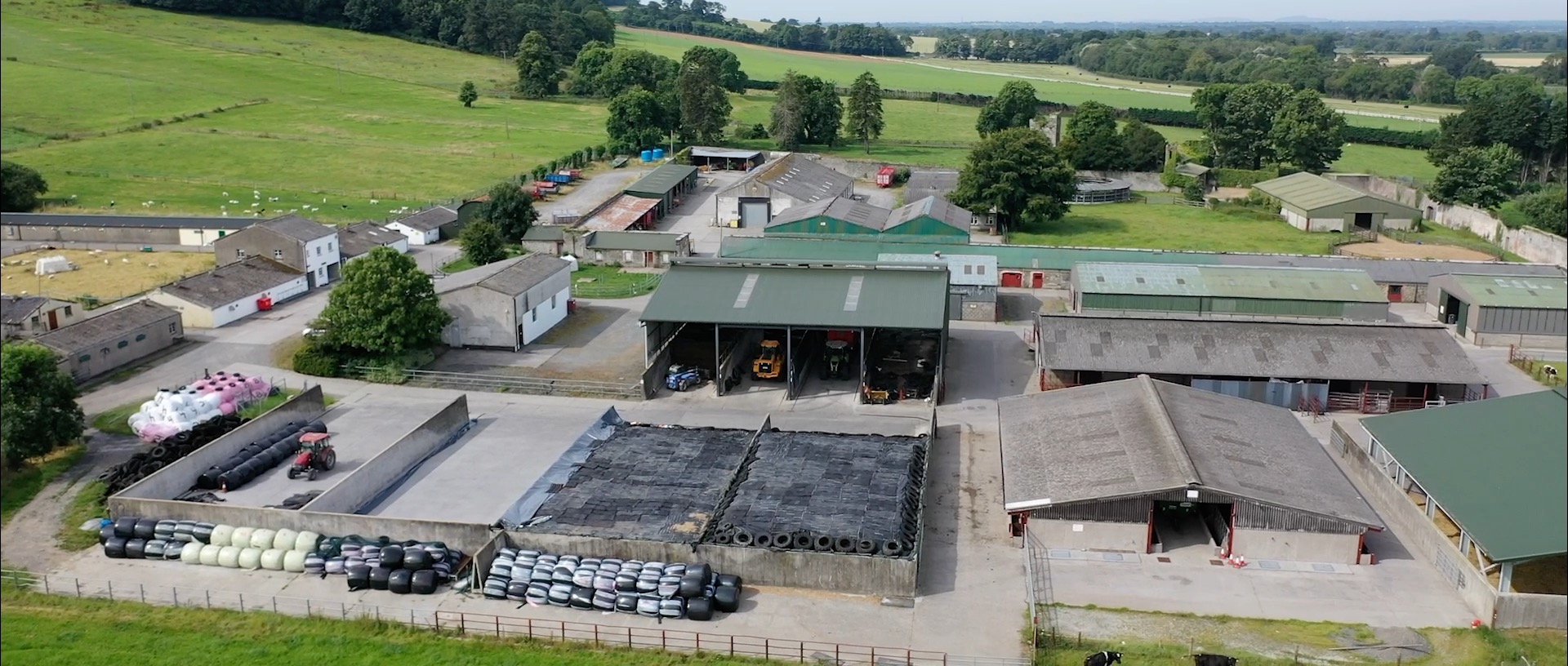
Welcome to Our Modern and Innovative Facilities
At Lyons Farm, we pride ourselves on delivering quality education and producing new knowledge from research in a wide variety of agricultural and land use systems. Our facilities are designed to ensure optimal productivity, animal welfare, and efficiency, supporting both our long-standing heritage and our commitment to modernisation.
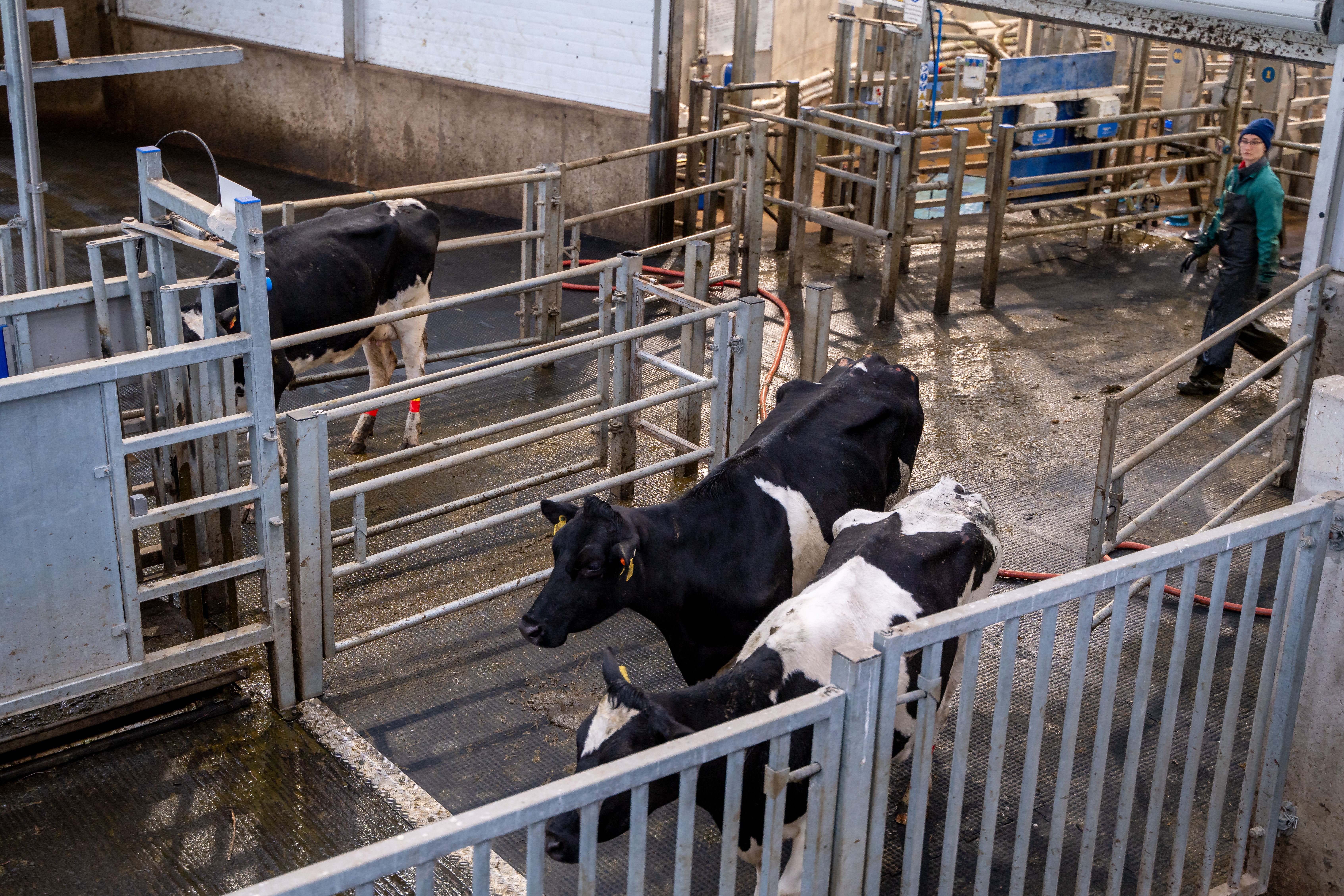
Dairy Facilities
Our dairy unit is home to a 180-strong, spring-calving herd that has been supplying high-quality milk to the Irish market for over 100 years. Spanning 54 hectares, our dedicated grazing area includes 41 fenced paddocks with an extensive roadway infrastructure, complete with two underpasses to facilitate seamless cow flow. The grazing platform has a sophisticated water management system that monitors water usage and allows for precision dosing of supplements independently of water consumption. This system is remotely monitored and controlled via an app for maximum convenience and efficiency.
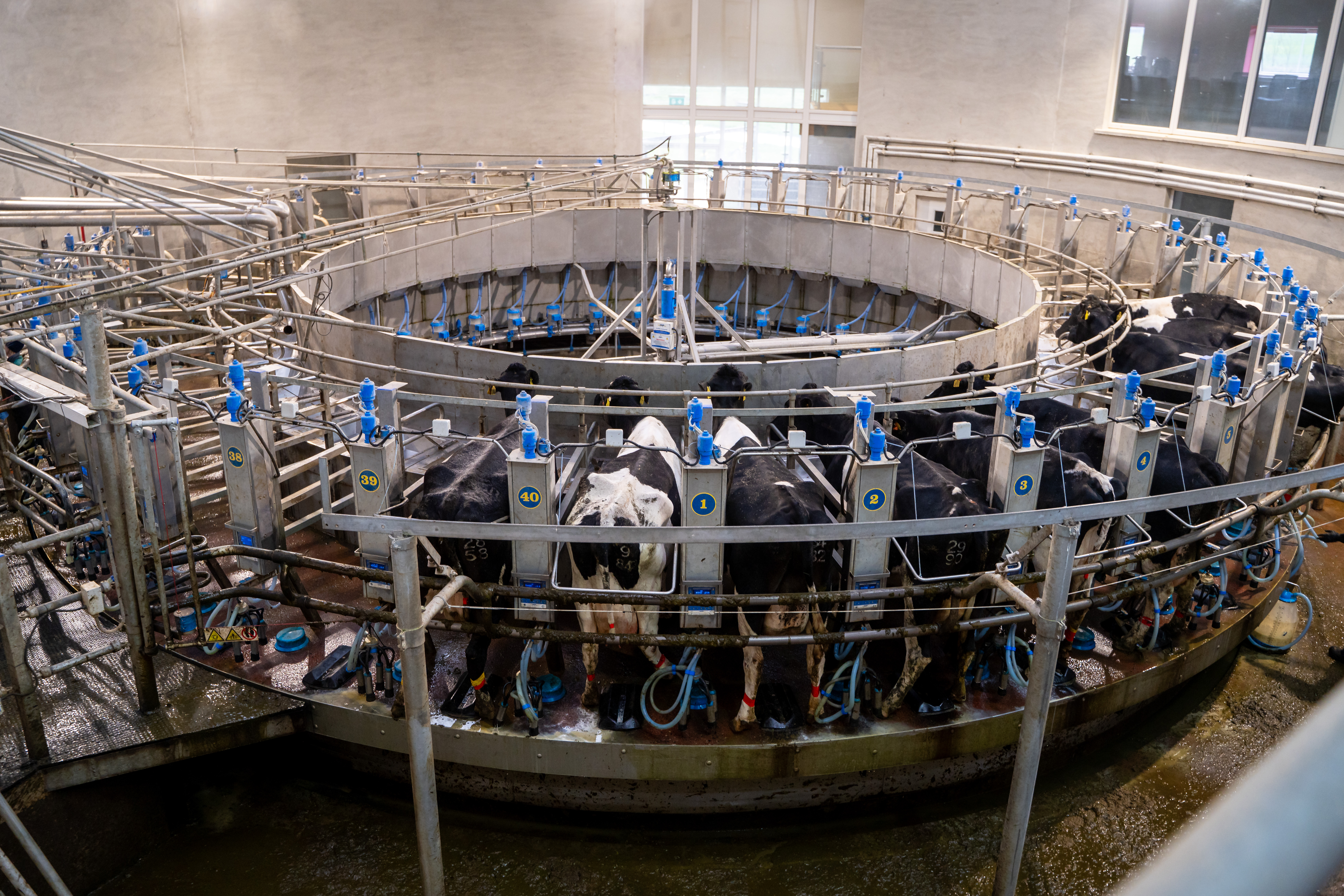
Cows are milked twice daily in our state-of-the-art Dairymaster 40-unit rotary milking parlour, which features a cluster cleanse system to help control somatic cell count (SCC) and promote udder health. The parlour is equipped with four individual feed lines that enable precision feeding of different pellet feed types, stored in four monitored silos with real-time data on feed level, temperature, and humidity. A fully automated identification system using RFID tags integrates with the feeding and milking systems, allowing for automatic recording of milk yield at each milking session and the option for milk sampling for detailed analysis.
To streamline animal handling, our dairy unit is outfitted with comprehensive facilities that include automatic drafting to various holding pens and crushes designed for efficient and safe animal flow. Rubber matting in high-traffic areas supports good locomotion health and reduces stress on the animals.
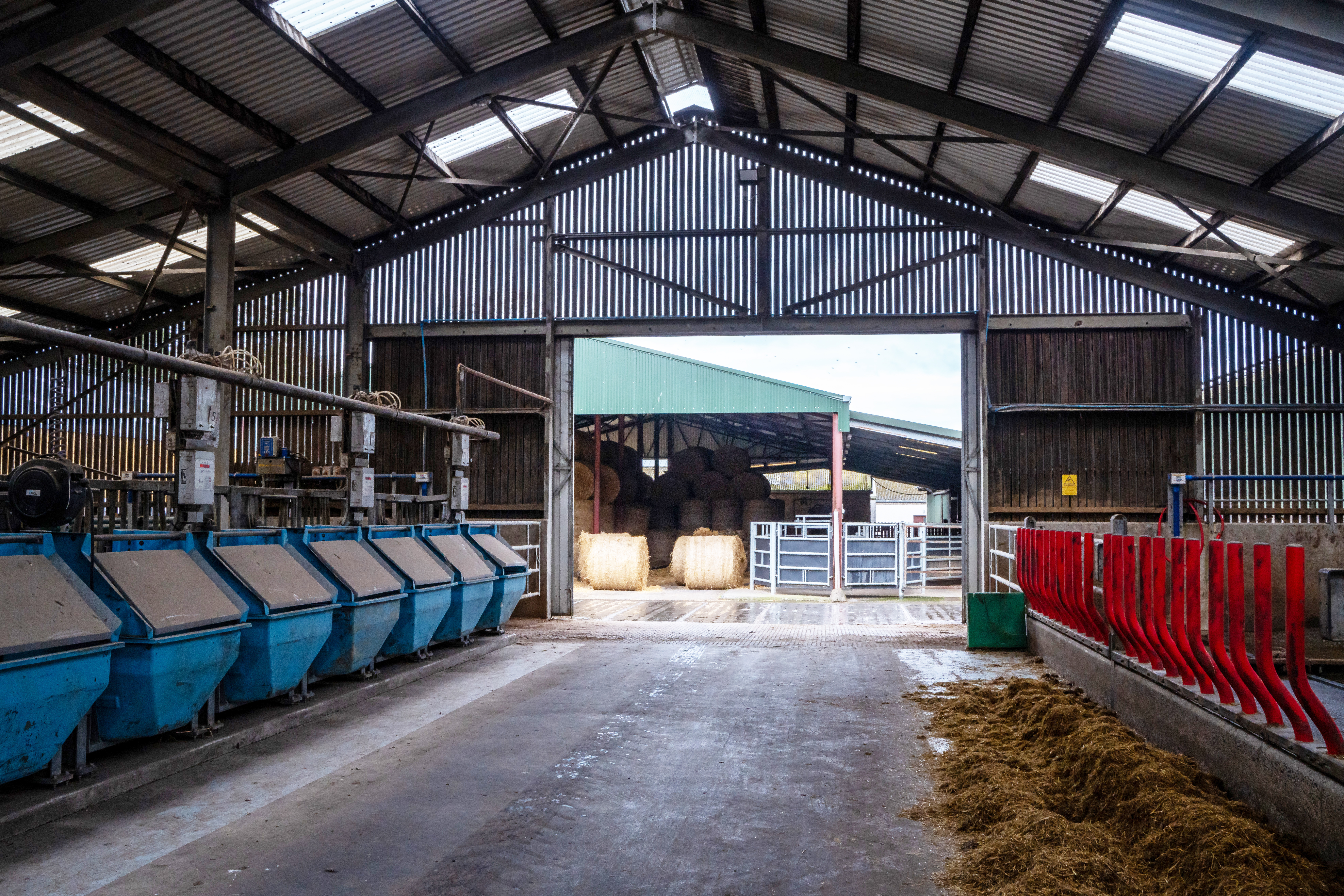
Our indoor housing includes 224 cubicles fitted with Easyfix plastic cubicles and rubber matting over 50mm double latex foam mattresses, ensuring high comfort and promoting extended lying times to enhance foot health during housed periods. The high cubicle-to-cow ratio, ample water trough points, and versatile pen division options enable flexible group arrangements, ideal for supporting research activities. Additionally, the facility features an Insentec RIC system with 20 feed boxes that manage up to four different forage types, automatically recording individual animal intakes, feeding behaviour and allowing precise control over feeding parameters.
All breeding-age dairy stock are equipped with monitoring tags that track cow activity, rumination, and oestrus, providing valuable data to enhance herd management.
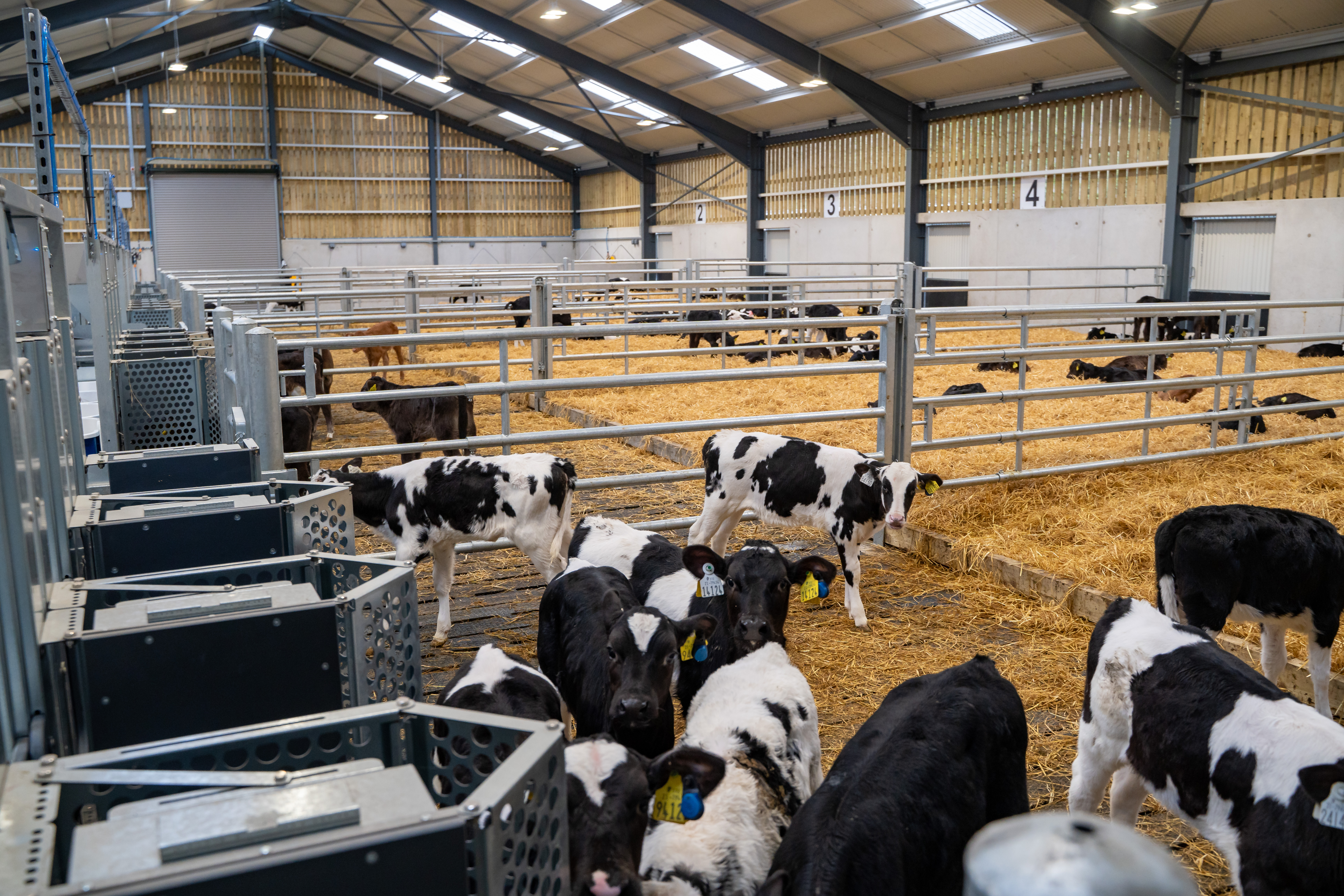
Calf Rearing Facilities
Opened in March 2025 our cutting-edge calf rearing, teaching and research facility has set new standards in calf welfare and productivity. Capable of accommodating up to 180 calves from our dairy herd, this has 5 pens , each with access to outdoor wood chip-bedded areas. Individual calf cribs and a training pen are used for new born calves to facilitate colostrum and transition milk feeding in their early days, ensuring an optimal start to life.
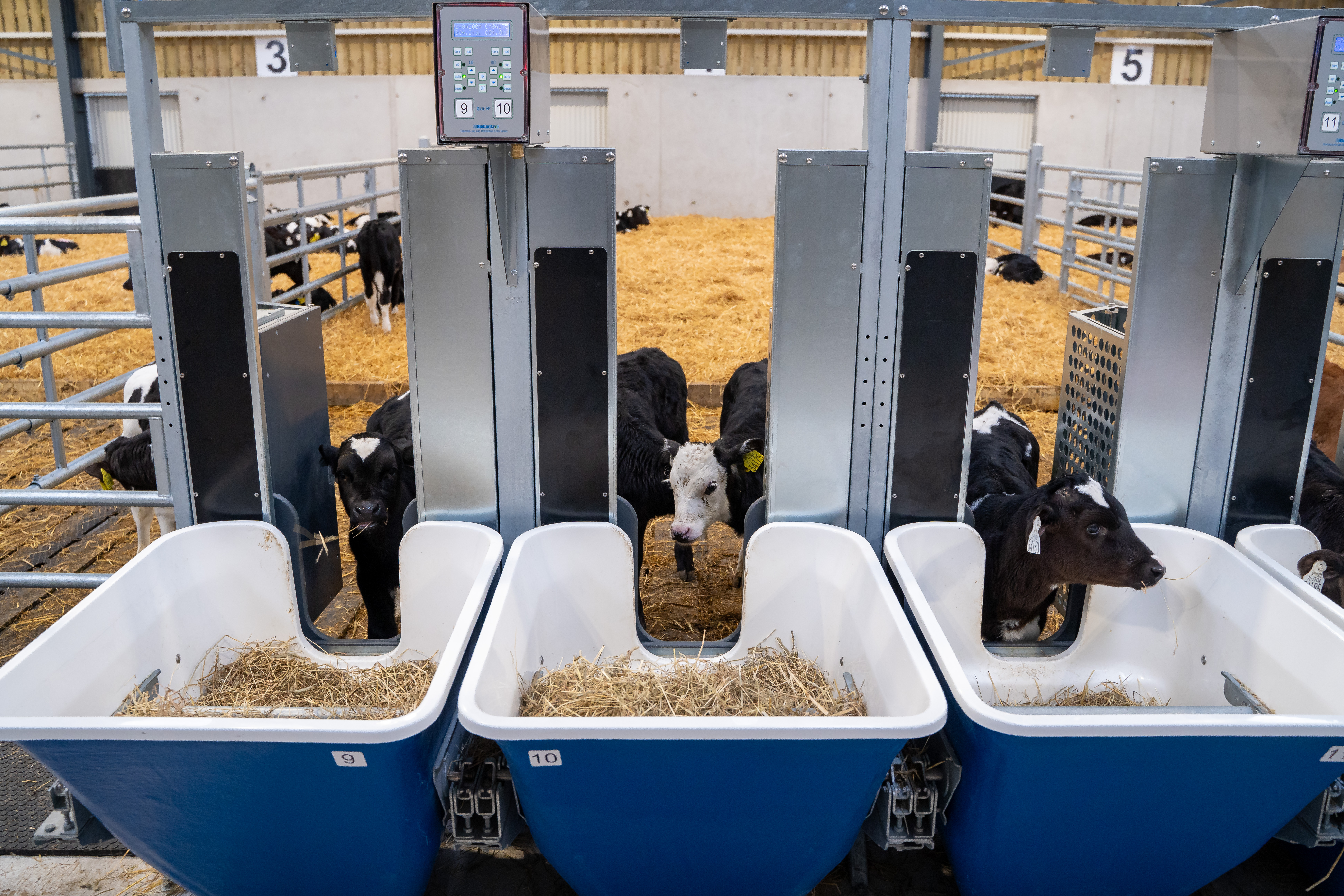
The facility includes a JFC computerised milk/milk replacer feeding system that can manage whole milk and up to four different milk replacer types, with each calf’s feeding performance monitored continuously. This data is accessible anytime, anywhere via an online platform or app. For added precision and convenience, an additive dispenser can administer liquid or powder feed supplements or medications without additional labour, ensuring that calves receive essential nutrients and care without stress.
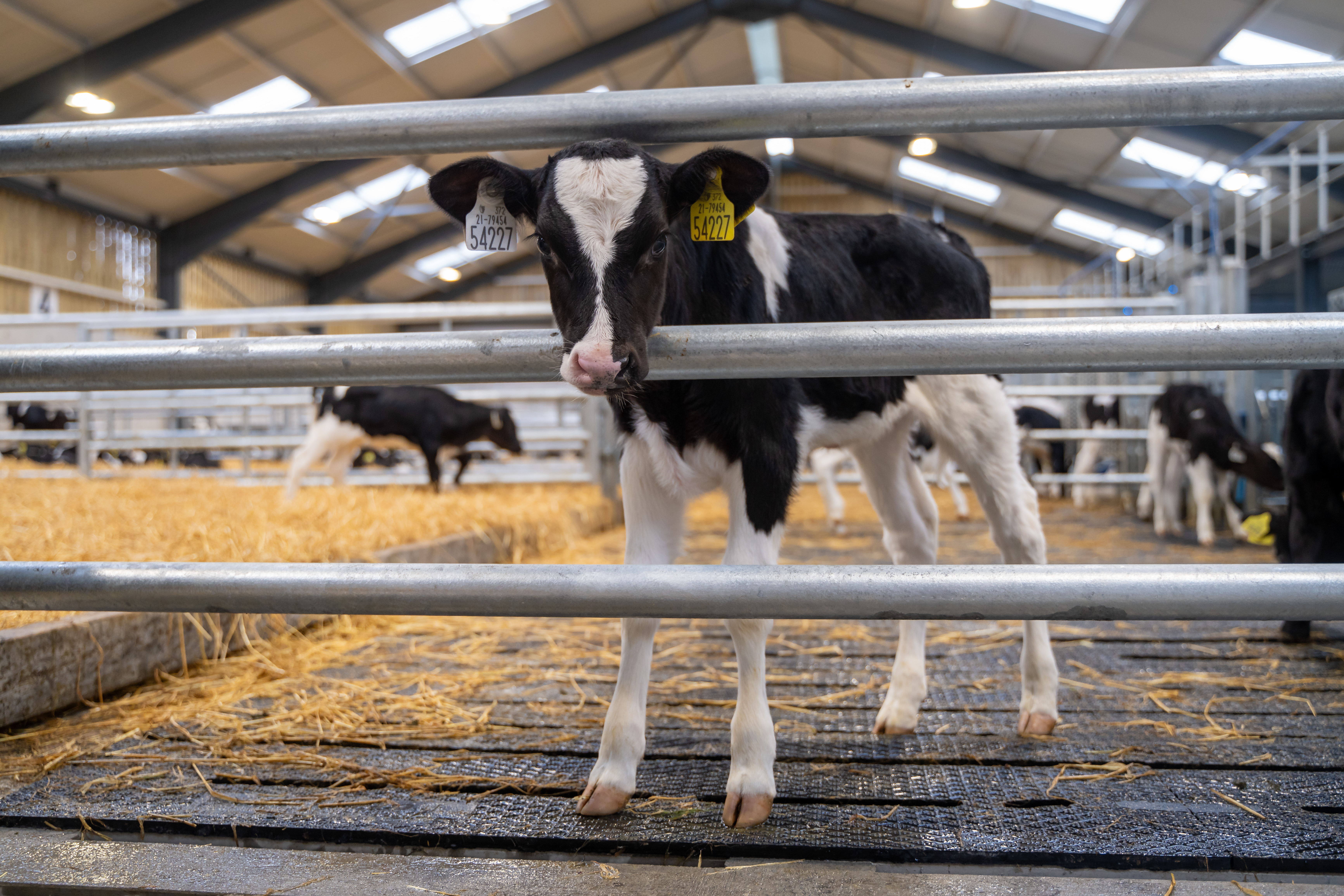
Our facility is equipped with a computerised feed intake system, which provides exceptional control and insight into calf feed intake and feeding behaviour. This versatile system tracks both roughage and concentrate intake for individual animals, using RFID ear tags and weight cells to measure feed consumption accurately. All data is stored on a cloud-based system, allowing for seamless analysis and monitoring anytime, anywhere. Small ruminant GreenFeed units for measuring enteric methane emissions are also a key feature of this new facility.
.jpg)
Beef Cattle Facilities
Our beef cattle facilities feature a flexible grazing area, individually fenced with an extensive roadway network to allow for easy movement of animals. The land area supports the sowing of experimental swards as needed, and we have the in-house capability to provide necessary grazing infrastructure, such as fencing and water systems.
We can house up to 450 animals per year in a mix of slatted housing and straw bedding. The slatted housing is equipped with Easyfix rubber slat matting to enhance animal comfort and locomotion. Head locking barriers are available, reducing the need to move animals to handling facilities for routine interactions.
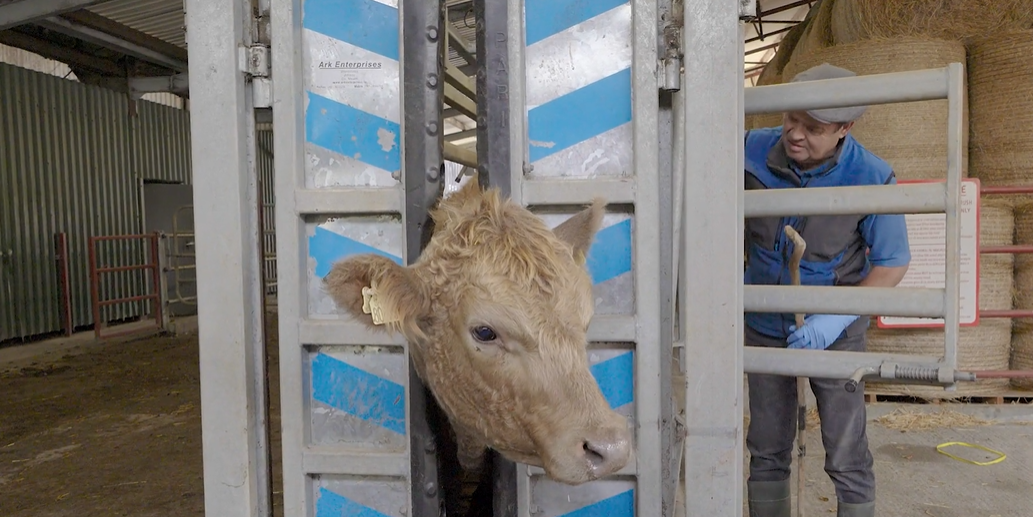
Our shed design supports the use of Greenfeed equipment to measure methane emissions while animals are housed. The facility includes monitored water usage with the capability to precision dose up to six supplements, independent of water consumption, and remote system monitoring and control via an app. Individual group pen water consumption data is also available, and penning can be adjusted to meet research needs on a case-by-case basis.
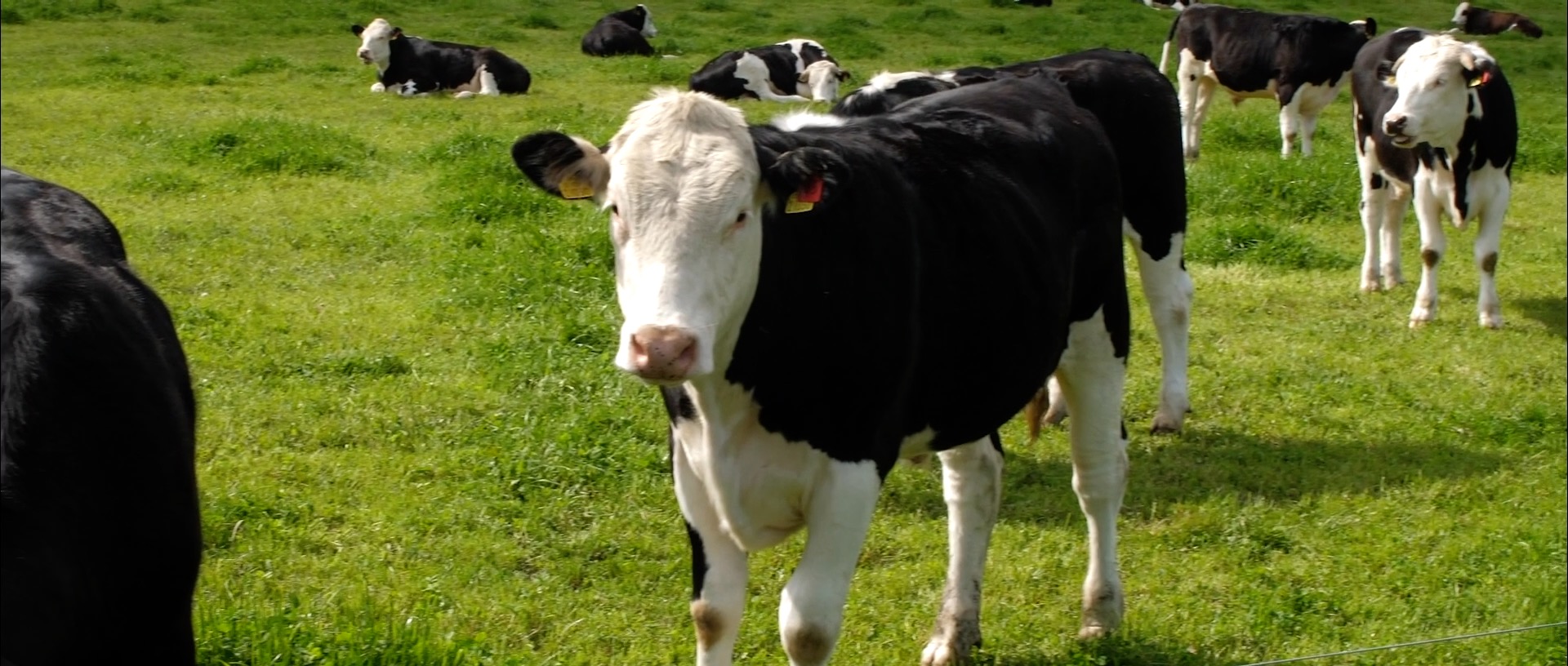
Extensive animal handling facilities are designed for ease of animal flow, promoting a low-stress environment for both animals and operators. The facilities include two squeeze crushes (manual and hydraulic) with integrated animal weighing capability, penning and sorting facilities, along with several working chutes and manual headlocking gates.
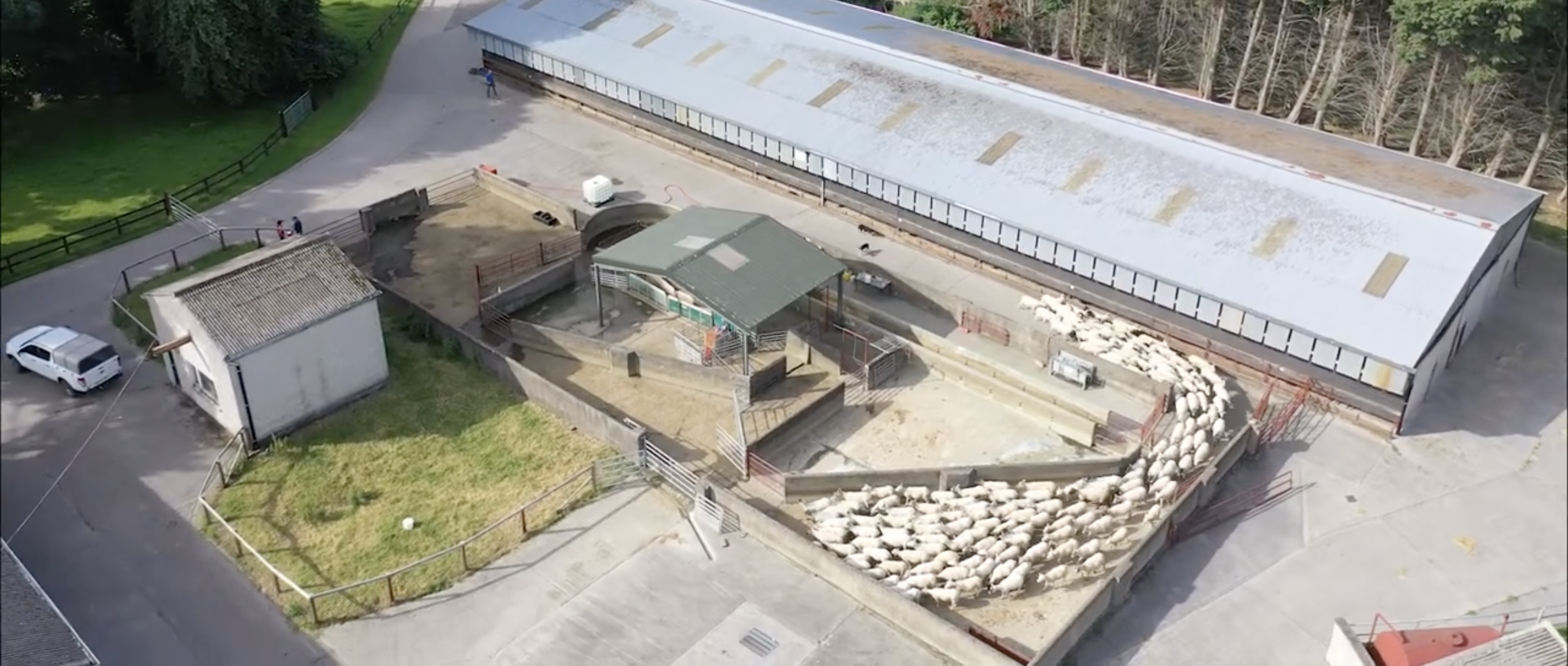
Sheep Facilities
Our sheep facilities include extensive grazing areas on both hill and lowland terrains. All sheep grazing areas are fenced into individual paddocks ranging from 0.5 to 2.0 hectares in size, with serviced water to support a range of managed grazing practices.
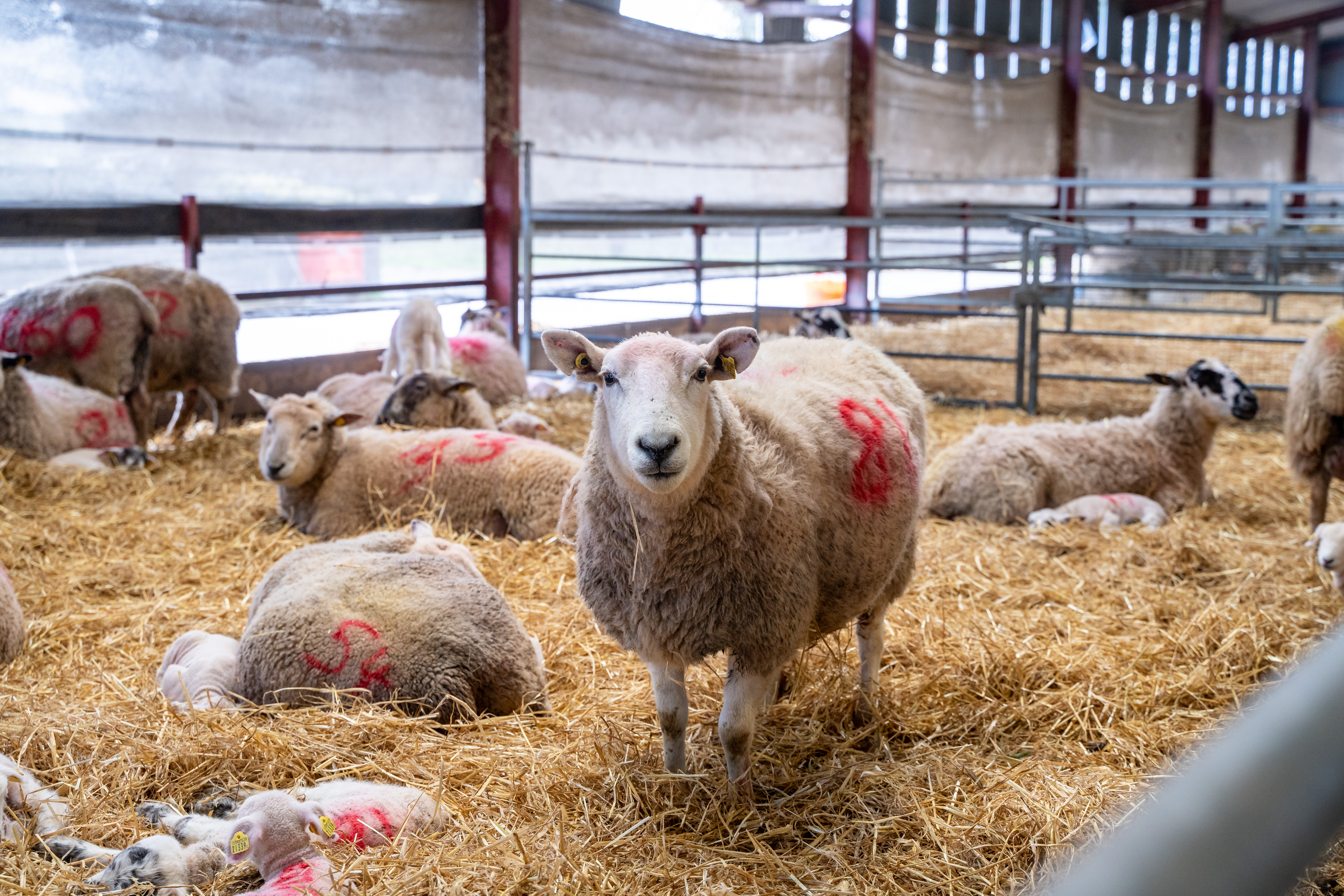
We offer excellent sheep handling facilities, including permanent foot bathing, manual drafting, and computerised automatic three-way drafting and weighing. All data is recorded via RFID readers and stored centrally for later analysis. Mobile sheep handling facilities are also available, providing convenient in-field animal handling, particularly at temporary sites where short-term experimental swards have been established.
 (3).jpeg)
We maintain a flock of 300 ewes, predominantly lambing in March in a mid-season system. All ewes are bred to synchronised oestrus, allowing for compact lambing and flexibility in animal selection for experimental treatments. Lambing dates can be adjusted if experimental demands require, such as early January lambing.
Our sheep facilities include group housing on straw for 300 ewes, with up to 14 group pens available, adjustable in size as needed. This setup allows for full indoor lambing and early life care indoors if required.
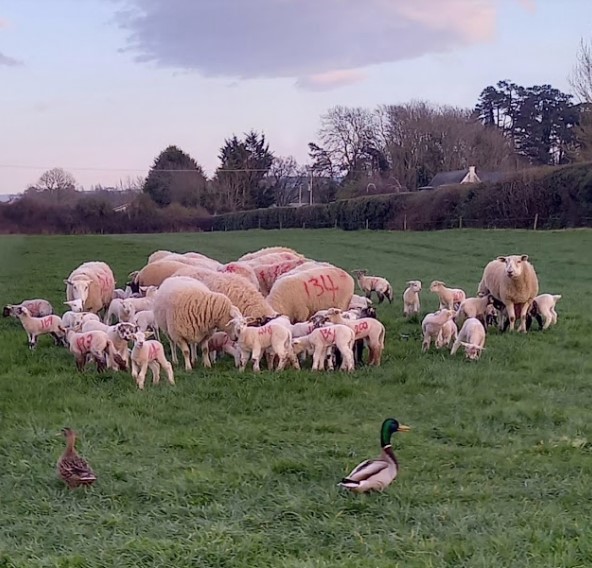
Additionally, our facilities include sheep housing for reproduction studies with amenities for semen collection and a small primary analysis lab. Individual housing is available for nutritional studies (subject to HPRA approval) for up to 33 ewes, with additional capacity provided if required. Recent modernisation also now affords the capacity to measure enteric methane emissions from group housed sheep using small ruminant GreenFeed units.
Through these modern and innovative facilities, we are committed to advancing dairy, calf, beef, and sheep management practices, ensuring our animals receive the best care while maximising efficiency and productivity
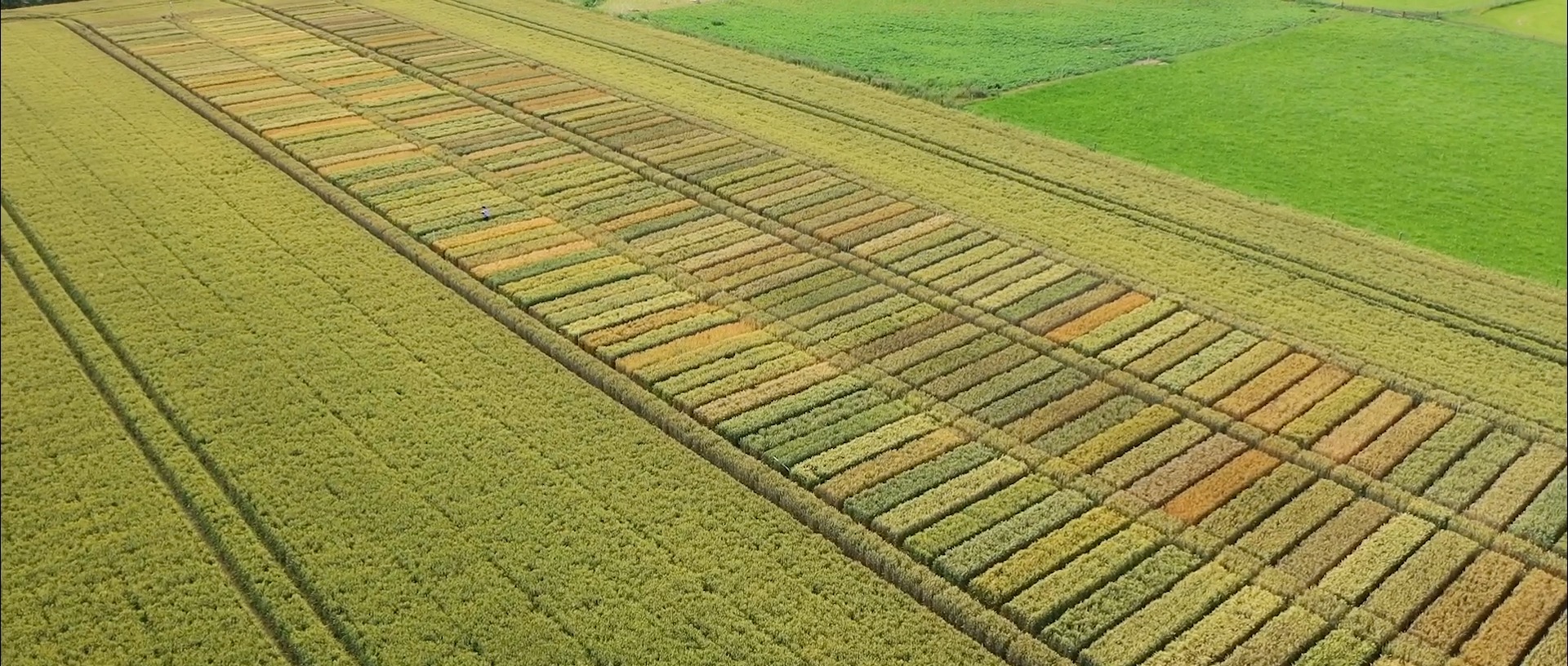
Crop Research Facilities
Lyons Farm manages approximately 50 hectares of crop production on a rotational basis, including short-term leys for silage and long-term minimum tillage areas. A new teaching and research area launched in 2024, focuses on sustainable food production and industrial crops.
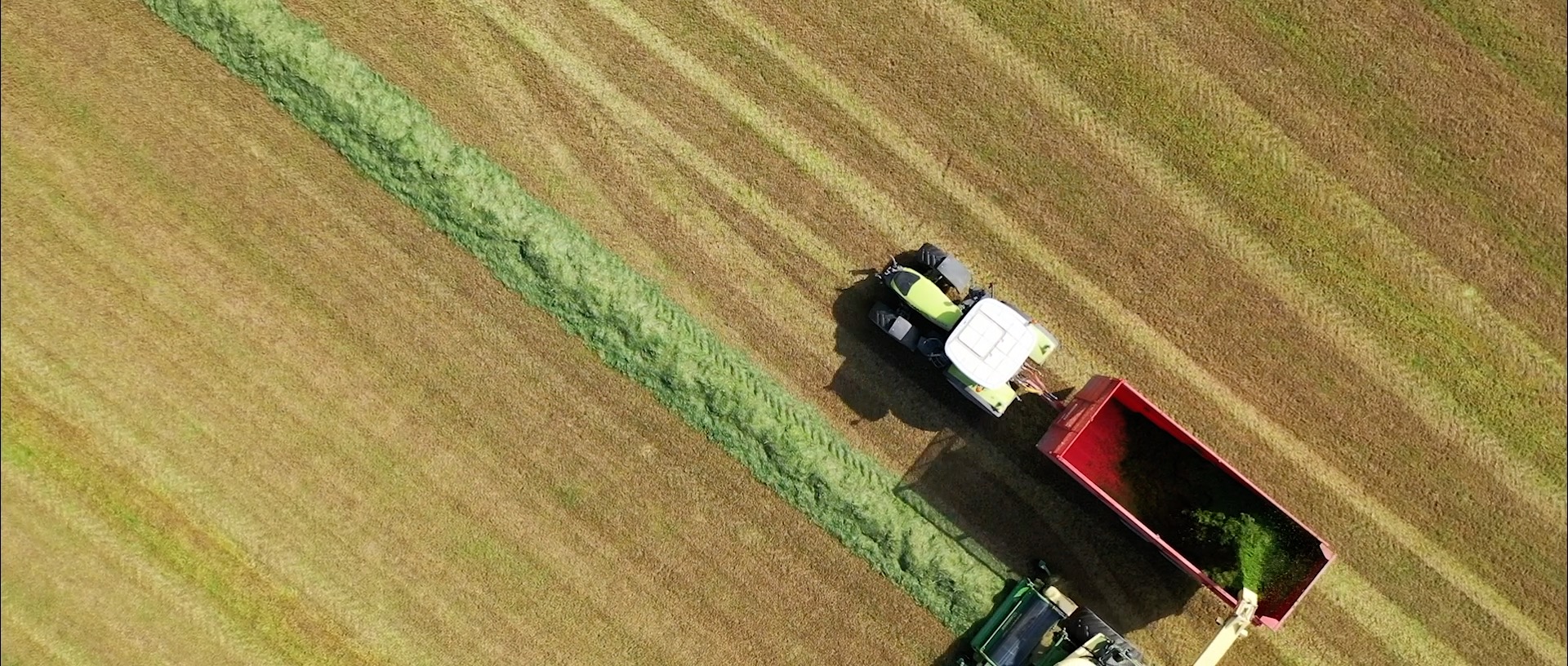
The farm is equipped with a variety of tillage equipment, including air seeders, precision plot sowers, and harvesters for grass plots. GPS and ISOBUS-enabled tractors with 2.5 cm accuracy facilitate precise operations, linked to a cloud-based data management system. Nutrient application is optimised with an ISOBUS-controlled vacuum tanker featuring flow control and a Low Emission Slurry Spreading (LESS) application bar.
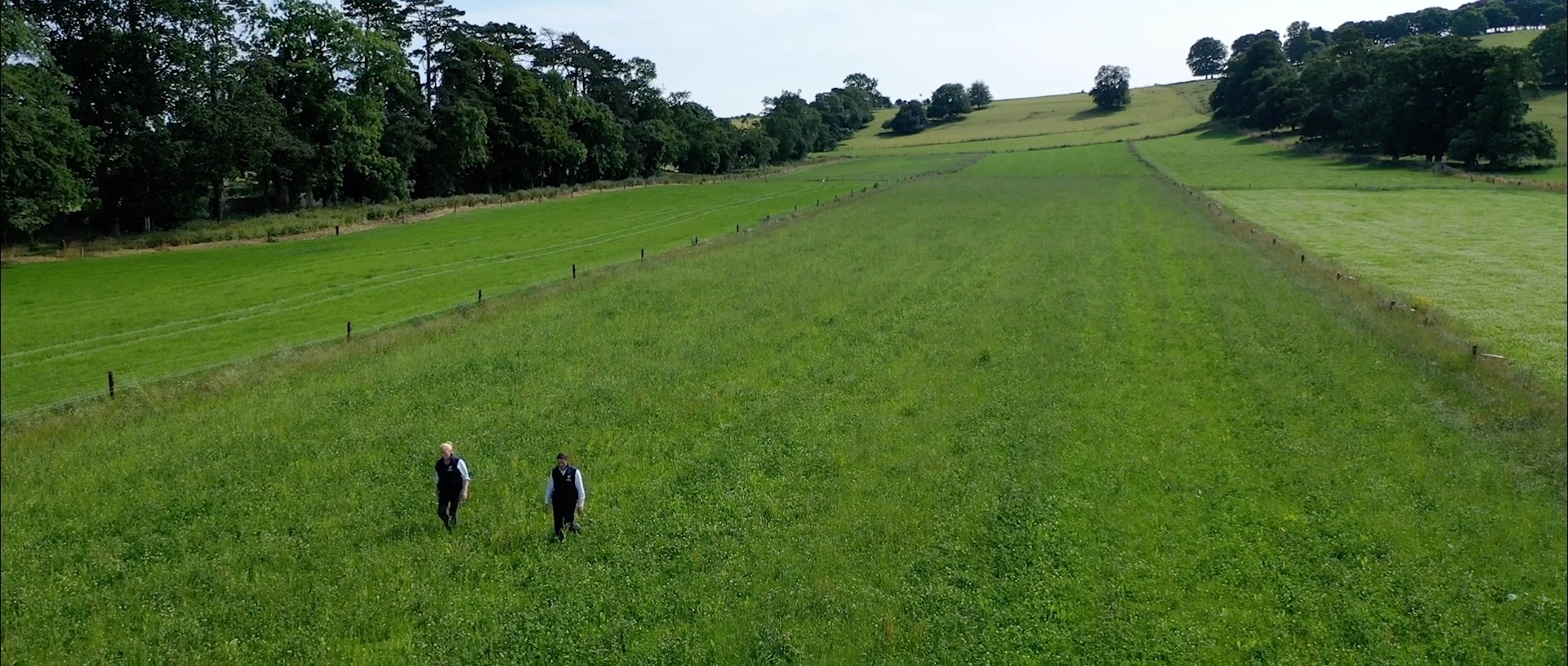
Long-term Grazing Platform.
The Long-term Grazing Platform (LGP) at Lyons Farm covers 24 hectares, divided into 12 hydrologically isolated 2 ha paddocks, each monitored for water flow and quality via flume stations. The LGP was established in 2019 and is a participant site in the Global Farm Platform i.e. a global network for farms that are investigating measures to enhance the sustainability of ruminant production systems ((opens in a new window)https://globalfarmplatform.org).
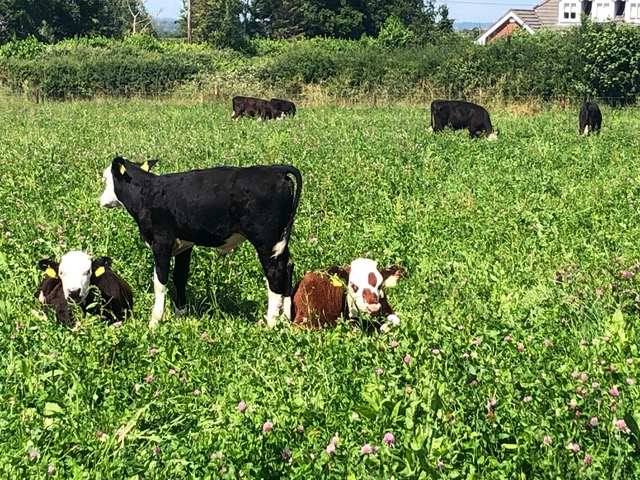
The Platform consists of three farmlets: 1) perennial ryegrass; 2) perennial ryegrass and white clover; 3) multispecies sward comprised of perennial ryegrass, timothy, white and red clover, chicory and ribwort plantain. Each farmlet consists of 8ha, arranged in four 2ha hydrologically isolated paddocks, that are grazed and managed at 1ha scale.
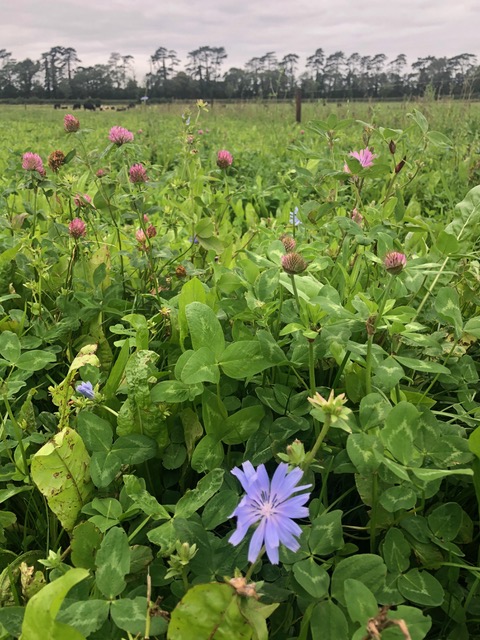
The area includes an animal handling facility with a circular loading pen and raceways, along with an elevated outdoor viewing platform. The LGP also features continuous tillage plots, forestry areas for soil carbon studies, and a meteorological station with soil moisture monitoring. A co-located Eddy covariance flux tower measures greenhouse gases as part of the national Carbon Observatory
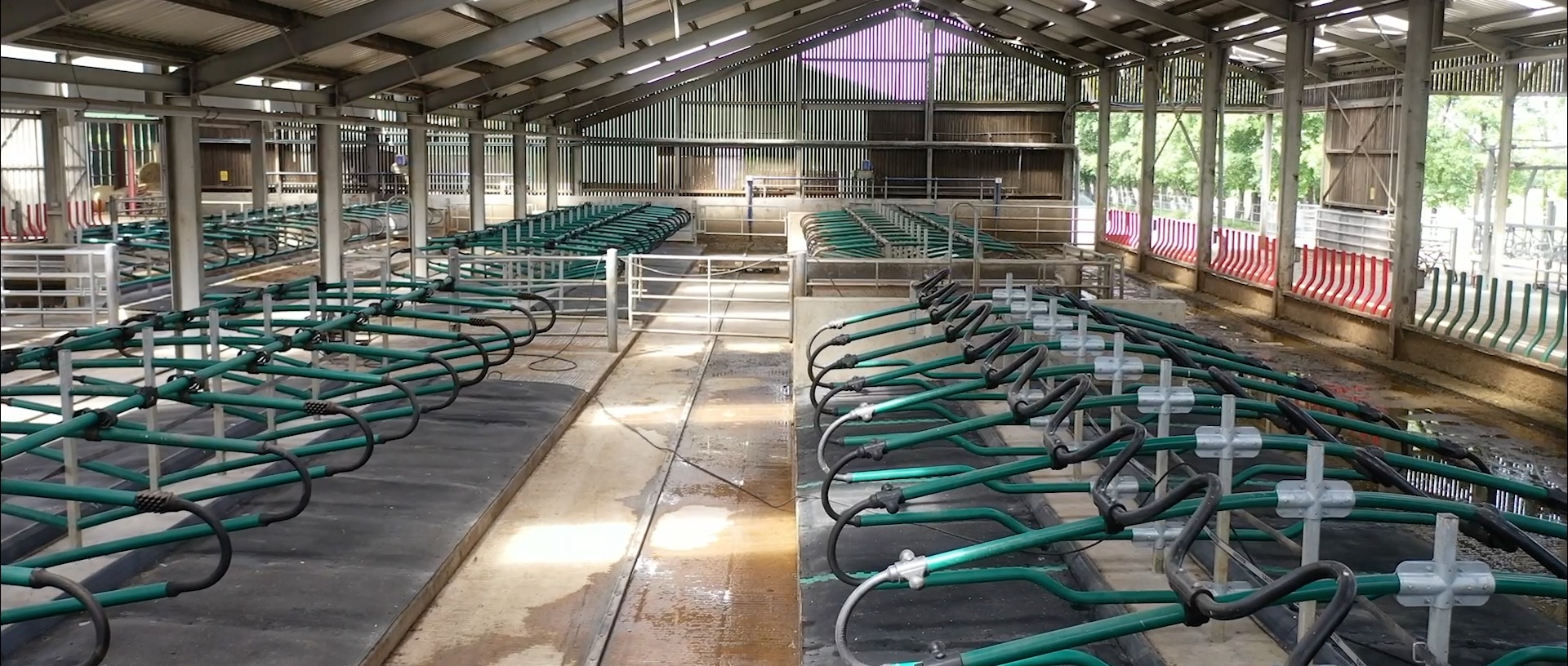
Ancillary Facilities
Lyons Farm offers metabolism measurement facilities, including stalls for up to ten cattle and metabolism crates for sheep. The cattle facility can accommodate milking cows with a 10 unit parlour. Lyons Farm has several GreenFeed measurement systems to facilitate detailed measurements of gaseous emissions, specifically Methane (CH4), Hydrogen (H2) and Carbon Dioxide (CO2), from individual animals. These turn-key systems can aggregate data for herd averages and are configured with pelletised feed attractants to encourage multiple daily visits by the animals. Emissions data is logged and automatically processed, providing users with summarised reports of calculated fluxes in gases. GreenFeed units can be used both indoors and at pasture and accommodate cattle (from adults to calves) and sheep.
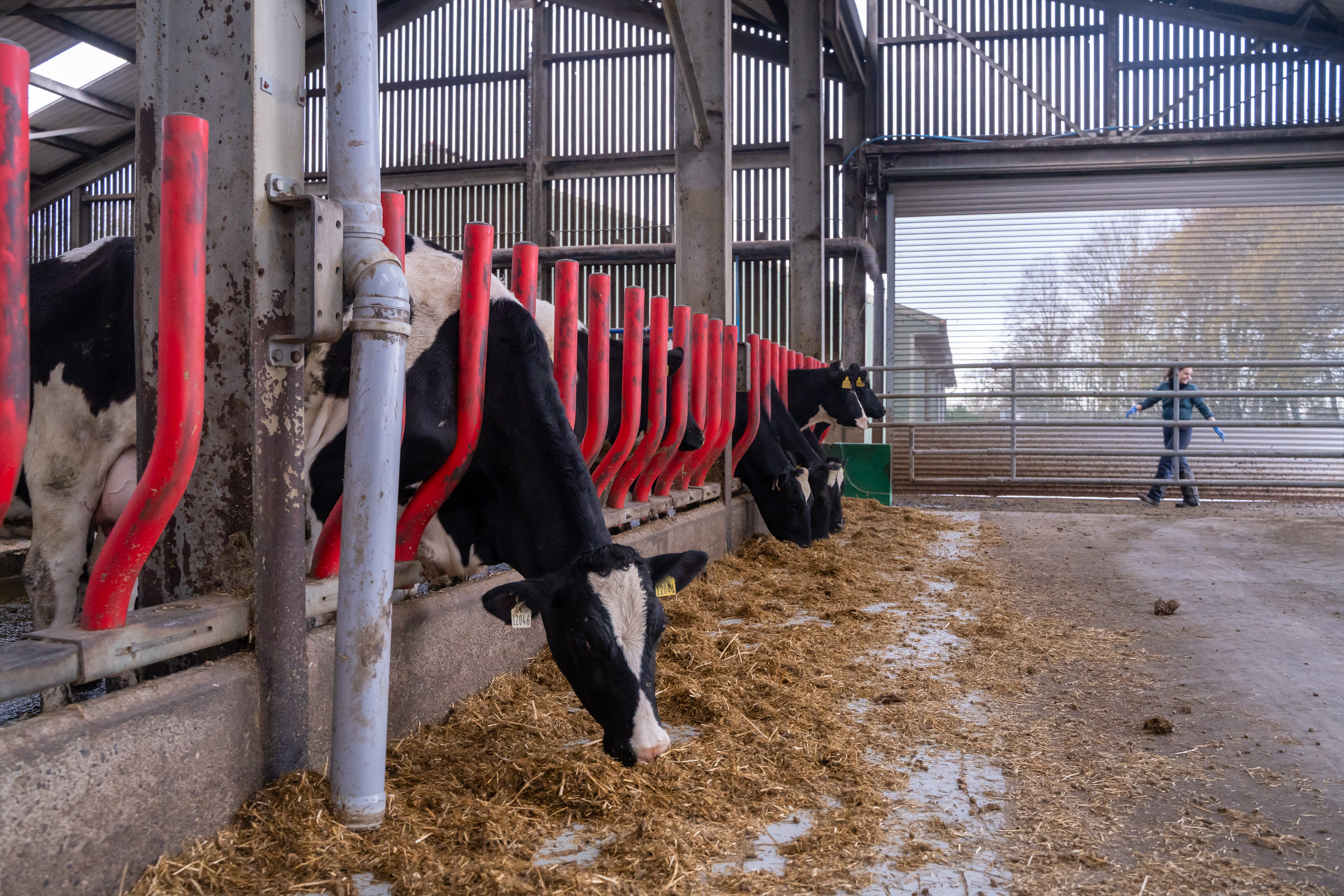
Animal Feeding
For animal feeding, Lyons Farm offers a variety of feed storage options that maintain high biosecurity and traceability standards. Storage for concentrate feeds ranges from 1 to 30 tonnes to cater for small experimental batches if needed. Monitoring of storage conditions for bulk concentrate feeds is available and includes quantity, temperature and humidity levels. Lyons Farm also has a number of bulk silage pits for forage storage and can handle baled silage for experimental purposes if required.
As part of our waste reduction programme Lyons Farm utilises a reusable protective cover and single oxygen barrier sheet for bulk silage preservation. This has reduced our plastic usage by approximately 66% per annum.
All forages can be distributed through a computer-controlled diet feeder, and specific diets can be formulated on a dry matter (DM) basis if needed. The system caters for daily adjustment of feeding level based on feed DM level and with over 50 individual pens on the system detailed feedout levels are possible.
Verification reports of batch mixes and feed outs are available, with KPIs monitored to ensure the accuracy of feed mixing and delivery.
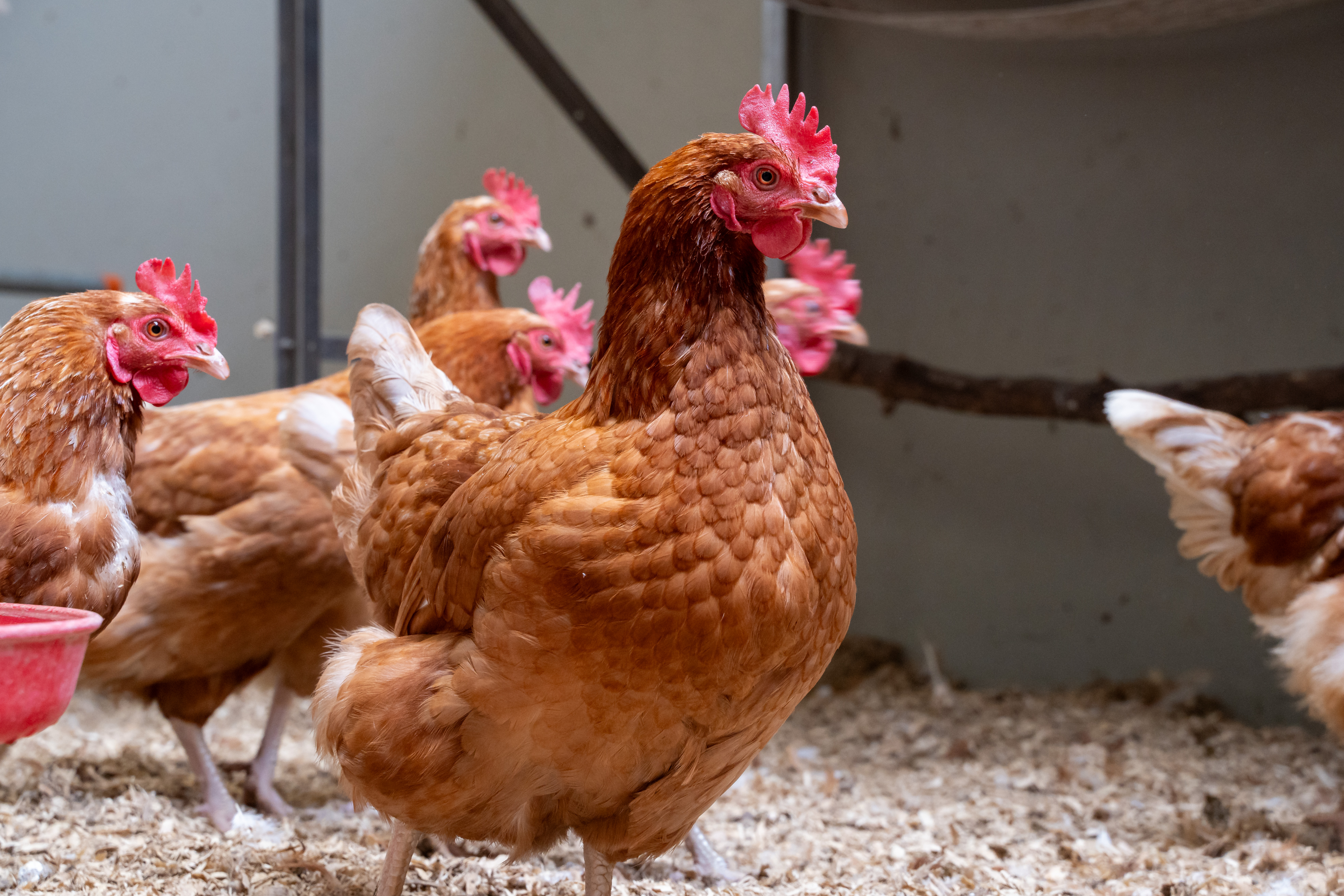
Poultry
To address the biosecurity challenges on a commercial poultry farm, a small poultry teaching unit allows students to access a model of a modern poultry facility. This unit provides students with the opportunity to experience a commercial layers operation, complete with an aviary system and sections of commercial feeding equipment. The poultry unit also includes an outdoor area.
In addition, an indoor heated teaching space is available to demonstrate animal handling techniques to students in a comfortable, bio-secure environment. This facility gives students hands-on experience, particularly in cases where biosecurity concerns might limit access to a commercial poultry setting.
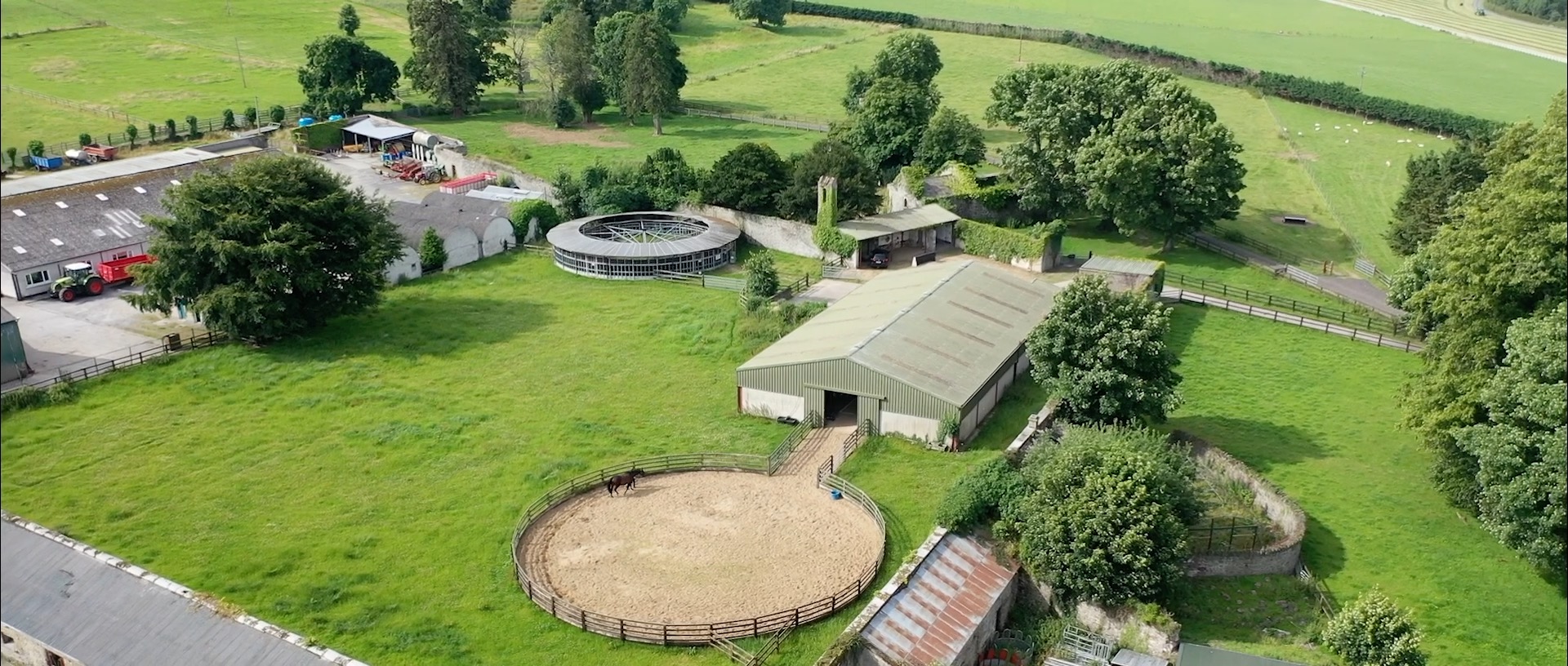
Horse Facilities
A herd of 10 mares and a teaser stallion is maintained for teaching purposes. The 10 mares are of mixed breeds, including Thoroughbred, Draught, Sport Horse, and Cob. Several paddocks are fenced for horses and equipped with permanent water supplies.
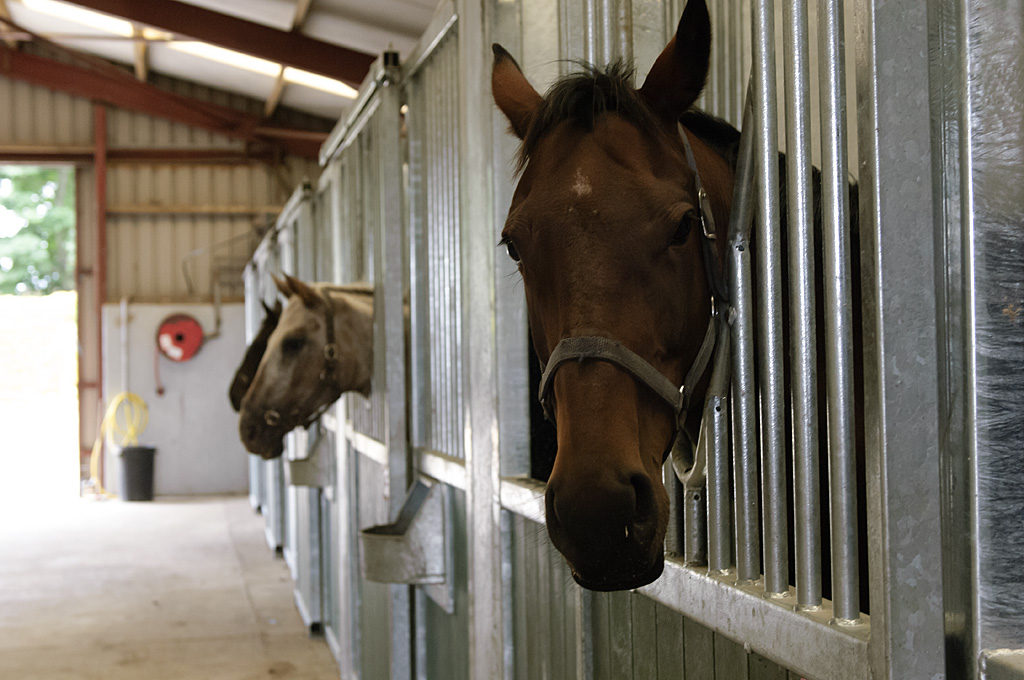
An American barn-style facility provides stabling for 10 mares, along with a tack room, office, and stocks room containing two stocks for animal handling. The barn's layout offers a large, open indoor area for demonstrating handling and examination techniques in a comfortable, secure environment. In addition, a sand lunging ring and a 10-horse walker, capable of achieving a trotting pace, are available. A teasing rail and a dummy mare for semen collection are also provided.
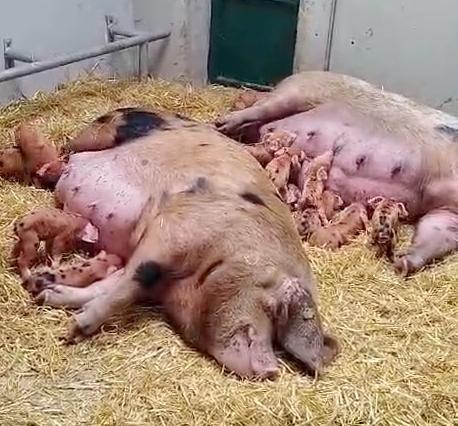
Pig Facilities
Lyons Farm has a pig teaching facility that allows students to observe sows farrowing in a free-farrowing system. The facility has the capacity for two sows at any given time, with both indoor (straw-bedded) and free-access outdoor wood chip areas. This setup allows the sows to engage in natural farrowing behaviours, such as nest building, and to participate in foraging activities.
In addition, an indoor heated teaching space is available to demonstrate both farrowing and the care of newborn bonhams to students in a comfortable, bio-secure environment. This facility provides students with hands-on experience, particularly in situations where biosecurity concerns might limit access to a commercial piggery.
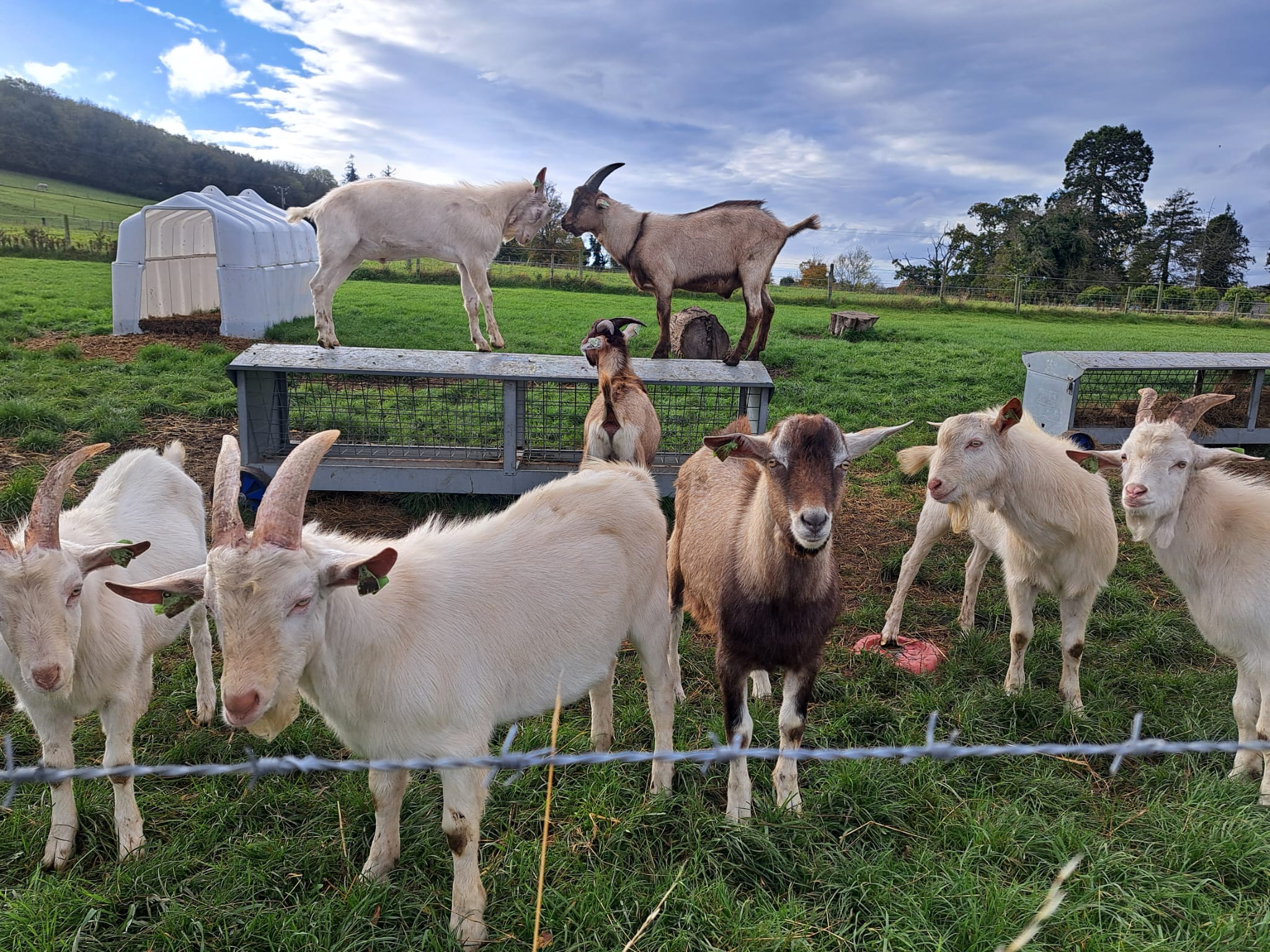
Goat Facilities
Lyons Farm has a small goat herd that facilitates translational research in One Health. This facility can house up to 50 adult goats and includes free access to a dedicated pasture area. Diverse enrichment is provided for our goats to support animal care and an observation area for the veterinary researchers. A number of indoor areas are available for pre and post operative care and a small surgical suite is available.
We discuss the role of precision agriculture throughout our operations. We look at our Abbey Isobus tanker with our flow and application control with our Trimble GFX 750.
